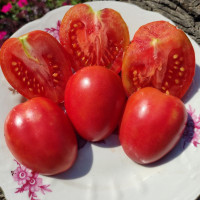Warty cabbage Turkish wartycabbage, hill mustard, or Turkish rocket Seeds / Bunias orientalis
Perennial herbaceous plant, species of the genus Sverbig (Bunias) of the Cabbage family (Brassicaceae). Buniasorientalis grows in one place for 8-10 years. The plant reaches a height of 110-150 cm, has a high winter hardiness. Buniasblooms early (in mid-May) and blooms until the end of June. It is characterized by exceptionally high honey productivity - up to 500-600 kg/ha (under favorable conditions).
You can sow Buniasseeds in spring, summer, and also before winter. In the first year of life, the plant forms a rosette of leaves and only in subsequent years produces shoots up to 150 cm high. the total life expectancy is 8-10 years, high yields of Buniasgives for 5-7 years. Eastern Sverbina does not overgrow with weeds - its aisles are covered with rosettes of basal leaves.
Depending on the timing of the sowing of the Buniasand the time of its shoots, in the first year, the overwintered rosettes form one, less often two generative shoots, and in the next two to three years powerful bushes grow from 25-45 flowering stems. In wide-row crops, even with 3-4 such bushes per 1 m², Buniasforms a continuous green carpet of profusely flowering plants
In the second year of life, Buniasorientalis in the flowering phase forms a biological yield of green mass of 40-60 t/ha. Buniasis unpretentious to soils, practically not damaged by pests and diseases. Buniasproductivity increases from the first year of use to the next due to the annual formation of additional shoots from the regrowth buds on the root collar. But, starting from the 5th-7th years, the life cycle of the plant gradually fades away and the herbage must be renewed, best of all - by shedding seeds.
Warty cabbage belongs to the group of plants - intestinal eubiotics, restoring the intestinal microflora and the functions of the gastrointestinal tract.
The plant is rich in trace elements. 100 g of dry product contains 21.4 mg of iron; 0.84 mg copper; 2.73 mg manganese; 5 mg titanium; 0.56 mg molybdenum; 2 mg boron. Buniasis a good supplier of vitamin C; 100 grams of fresh greenery of the plant contains 58 mg of ascorbic acid. Buniasis mainly eaten fresh.
From it you can cook salads, vinaigrettes, soups, seasonings for meat and fish dishes. Buniasis prepared for the future - dried, pickled, salted. This applies mainly to leaves, shoots and young stems. Recently, grated Buniasroots have been successfully marinated, used as seasonings, like horseradish. Powdered dried roots lose their bitterness and can be used to make sauces and condiments.

No questions about this product, be the first and ask your question.


















